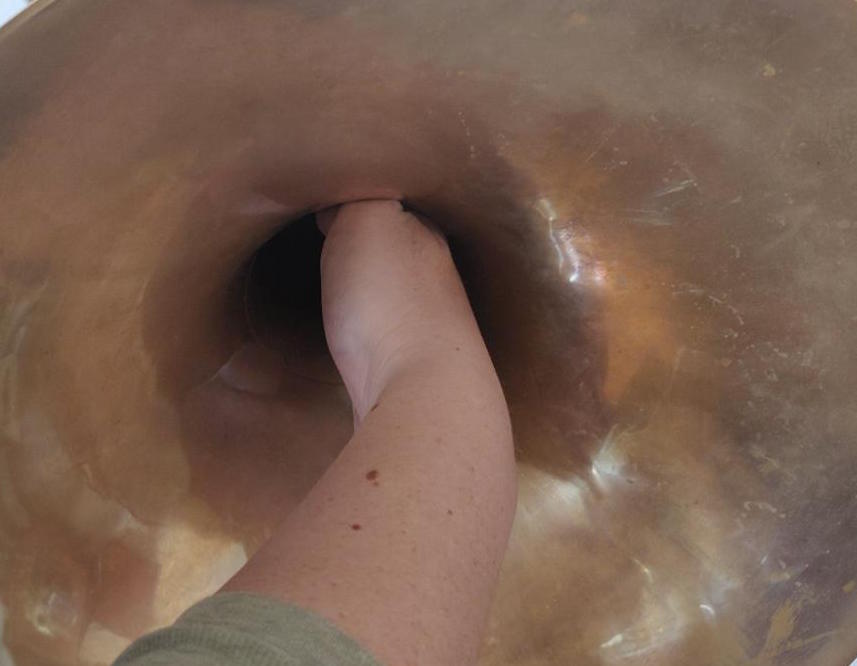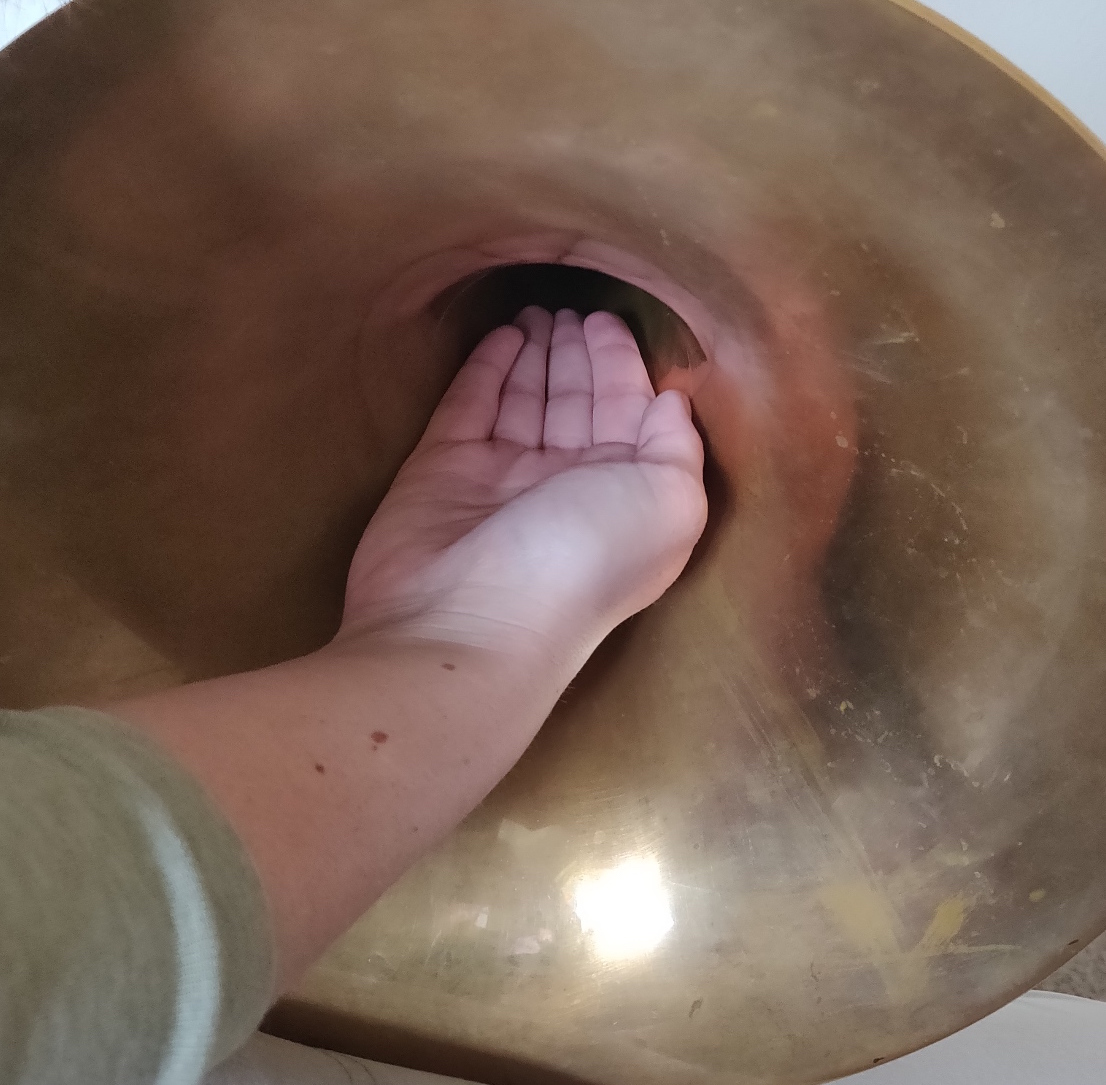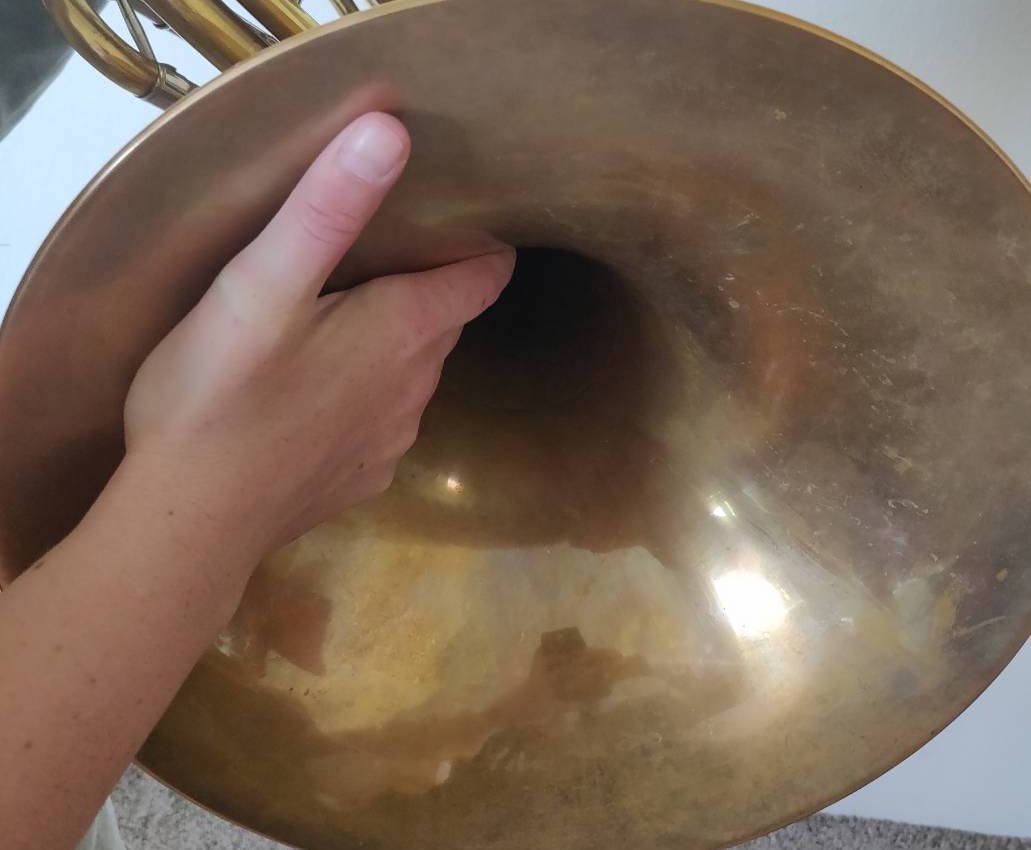The topic of the right-hand position is a notoriously controversial discussion for horn players and most of us have our own “school of thought” on how to utilize the right hand while playing the horn. I have had the wonderful pleasure of working with a variety of students from ages 8-70 and I have noticed that the right-hand position is one of the first and most frequently discussed topics in lessons. Surprisingly, I don’t advocate for any single hand position. When it comes to recommending a particular hand position with a student, I always consider what position will set the student up to sound their best when thinking about their unique hand shape and size.
What is the purpose of having the hand in the bell?
This is perhaps the most frequently asked question at instrument exploration classes with young students! The answer goes back to our roots when the horn became a fully chromatic instrument in the 1750s with the development of the hand horn technique by Anton Joseph Hampel. The hand can also be used to assist with intonation or molding particular sound concepts. Please note, that relying on intonation adjustments with the right hand can cause a change in tone color.
Five Different Approaches for Right-Hand Position
Using the Clock Face – The 1 O’Clock Position
When instructing students on where to place their hand in the bell, I often use the visualization of a clock face. For this position, the student should use a slightly cupped hand and place their thumb at the 1 o’clock position. To provide an external visual to the student, they should visualize scooping a small handful of water out of a river to drink. This will ensure that there are no gaps between the fingers. It is important for the teacher to check to make sure that the hand isn’t too cupped, which would cover the opening of the bell and create a muffled sound.

Flat Hand Outside Wall
This hand position requires that you place a flat hand, with your thumb horizontal to your fingers deep inside the bell on the far outside wall. Contrary to what you may believe about placing your hand deep inside the bell, this actually creates a more direct sound because of the flatness of the hand. Of course, pull your hand out slightly if the sound becomes too muffled. Remember that the ear is always your guide and the proper hand position should be chosen by what sounds best!

Flat and Center
This hand position was made popular by horn maker, Engelbert Schmid when he made a YouTube video about the right-hand position and its influence on intonation. He advocates for placing a flat hand, similar to the above position, into the center of the instrument to allow sound to escape from both sides of the hand. Intonation adjustments can be made with the tips of the fingers. This position also minimizes the contact of the hand with the bell, which allows for the bell to resonate more freely. Since Mr. Schmid is the expert on this position, here is an English translation of his video.
On the Leg 6 O’Clock Position
This position came to me a couple of years ago while playing a long-winded Faculty Brass Ensemble concert at Interlochen Arts Camp. I typically play horn off the leg with the first 1 o’clock hand position, however, I realized that the sound of the horn was going directly into my body and not projecting into the hall. This approach utilizes a slightly cupped hand at the six o’clock position with the palm facing up. This allows the sound to be directed over your shoulder and projected into the hall. This position is also ideal for individuals who might have shoulder challenges or carpal tunnel syndrome because the hand does not support the weight of the instrument. Of course, this position can only be used while seated and playing horn on the leg.

Flat Hand Inside Wall
This particular hand position is likely going to create some discourse amongst readers! This approach should use a flat hand, placed at the 9 o’clock position. I use this hand position only with young horn students because it is simply the easiest way for small individuals to hold the horn. This also allows for a beginning horn player to focus on sound production, instead of how to hold the instrument. If we begin with one of the previous hand positions, it is likely that their hand will gradually shift closed and cover the opening of the bell, creating a muffled sound. Each student is different, however, I will switch to one of the previous positions once the student can create a good sound and properly hold the horn.

Two Additional Thoughts
- Thinking about hand position can often disrupt the process of sound production. One trick to avoid overthinking the hand position is to place a felt pad for chair legs directly where the student should place the knuckle of their thumb in the bell. This will create an external reference for the student and I always advise them to “set it and forget it.” These felt pads are easily removable and should be used until the student builds the muscle memory for their hand position.
- Sometimes really small students who play the horn on the leg are challenged to bring the horn into the proper playing position. This typically leads to the mouthpiece naturally going far above the embouchure. One way to accommodate this is to use the flat hand, inside wall right-hand position and place the bell on a different chair to the right of the student, or to set the bell on a piano bench where they are sitting. This will allow the horn to come to the student, instead of them contorting their body in unusual ways to accommodate the instrument.
If you are interested in learning more about this topic, John Ericson of the blog Horn Matters has published multiple articles on the right-hand position. He also published a survey that was completed by previous Arizona State University horn professor, Ralph Lockwood, about the hand positions that were utilized by preeminent performers and educators.
Here are the links to these resources:
Ericson, John. “A 1982 Right Hand Position Survey: Tips, Notes, and More.” The Horn Call, XLV, no. 3 (May 2015): 50-55.
Ericson, John. “Horn Masters: Farkas on Right Hand Position.” Horn Matters, May 9, 2010.